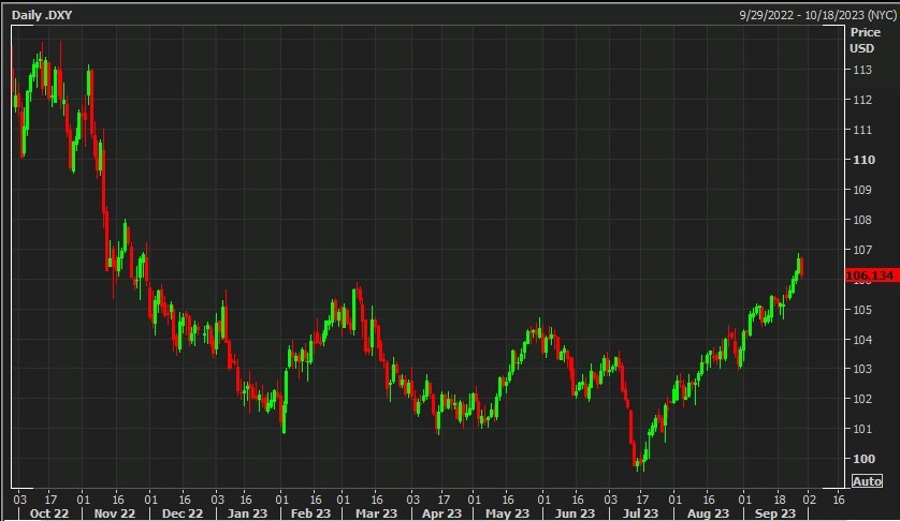Summary of a HSBC note comes via eFX.
For bank trade ideas, check out eFX Plus.
Key Points:
1. USD Upside Potential: • HSBC anticipates that the USD will experience more gains in the coming month. However, they expect these gains to be primarily against the EUR and GBP.
2. Persistent Driving Forces: • The factors that have been propelling the USD upwards are still in place. Although there are concerns about a potential US government shutdown, strikes by autoworkers, and a temporary dip in the USD's strength, the broader trend of "US exceptionalism" is evident.
3. Growth and Inflation Dynamics Favoring USD: • The US is experiencing a unique balance of growth and inflation that supports the USD. While the US has been managing inflation without significant harm to its economic activity, both the eurozone and the UK are witnessing sluggish growth.
4. Rate Hike Implications for EUR and GBP: • HSBC suggests that additional rate hikes by the European Central Bank (ECB) and the Bank of England (BoE) might not necessarily strengthen the EUR and GBP, respectively.
5. USD's Relative Position: • The USD is currently at a high level. The surge of over 6% in the DXY (US Dollar Index) since mid-July has pushed the USD's valuation to historically high levels. However, this elevated valuation can be justified, given that the yields the USD offers are also comparatively high from a historical perspective.
6. Selective Gains and Resilience of Other Currencies: • HSBC believes that the USD's gains from this point onward will be more discerning. They predict that currencies like the WY, CHF, and CAD will showcase more resistance to USD strength.
--
DXY index the past year:

The DXY Index is sometimes referred to as the U.S. Dollar Index (USDX).
- Its a measure of the value of the U.S. dollar relative to a basket of foreign currencies.
- was created in 1973 by the U.S. Federal Reserve after the dissolution of the Bretton Woods Agreement and is now maintained by ICE Data Indices, a subsidiary of the Intercontinental Exchange (ICE).
- calculated using the exchange rates of six major world currencies: the Euro, Japanese Yen, British Pound, Canadian Dollar, Swedish Krona, and Swiss Franc.
- Euro has the largest weight at just under 58%, followed by JPY (13.6%) and Pound (11.9%)



